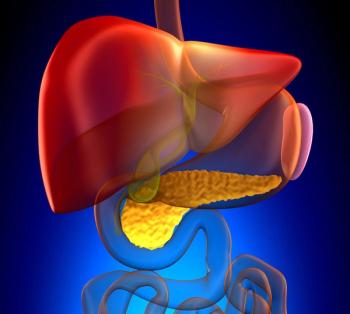
- ONCOLOGY Vol 11 No 5
- Volume 11
- Issue 5
Genetic Test May Guide Selection of Chemotherapy for Infants With Neuroblastoma
A test measuring the status of DNA multiplication in tumor cells (ploidy), along with other known predictors of treatment response, could provide guidance in selecting chemotherapy for infants with neuroblastoma, the most common childhood
A test measuring the status of DNA multiplication in tumor cells (ploidy),along with other known predictors of treatment response, could provideguidance in selecting chemotherapy for infants with neuroblastoma, themost common childhood cancer, according to a study reported in the March5th Journal of the National Cancer Institute.
Laura C. Bowman, md, St. Jude Children's Research Hospital, Memphis,Tennessee, and coauthors of the study report explain that existing systemsfor staging infants under 1 year of age with inoperable or metastatic neuroblastomahave been inadequate for predicting response to chemotherapy. Their earlierstudies had suggested that the DNA content (or ploidy) of the malignantneuroblast cells might be a predictor of treatment response. Based on thoseresults, the researchers conducted a prospective, nonrandomized study of172 infants with nonresectable or metastatic neuroblastoma to determinewhether neuroblast ploidy could be used to guide treatment choice and todifferentiate between those who would respond to standard therapy and thoserequiring an immediate switch to an alternative chemotherapy regimen. Theauthors note that a delay in initiating alternative chemotherapy when standardtherapy is ineffective is associated with a worse outcome.
Of the infants in the study whose tumor cell ploidy status could beassessed, 127 had hyperdiploid tumors, while 41 had diploid tumors. Ploidystatus was assessed after all of the children received one initial cycleof cyclophosphamide (Cytoxan, Neosar) plus doxorubicin (a well-toleratedstandard therapy). Those with diploid tumors were then switched to cisplatin(Platinol) followed by teniposide (Vumon), since earlier studies suggestedthat diploid tumors responded less well to standard therapy. Infants withhyperdiploid tumors received successive cycles of cyclophosphamide anddoxorubicin; if any of these children showed evidence of disease progression,however, they were switched to the alternative chemotherapy.
The researchers also assessed other prognostic factors commonly measuredin patients with neuroblastoma, such as NMYC gene copy number, serum lactatedehydrogenase, and tumor stage. After treatment, the children were followedfor a median of 5.6 years.
Study Results
Of the 127 infants with hyperdiploid tumors, 115 (91%) had completeresponses (defined as more than 90% regression of tumor at the primarysite and complete regression of all metastatic disease, including bonelesions). The 3-year survival estimate for this group was 94%. Among theinfants with diploid tumors, 19 (46%) of the 41 assessable children hadcomplete responses, and the overall 3-year survival estimate was 55%. Theresearchers also found that amplified NMYC gene (ie, extra copies of thisgene) and elevated serum lactate dehydrogenase were statistically significantmarkers of higher-risk disease in the diploid group.
On the basis of these results, the authors believe that tumor cell ploidyis a major determinant of treatment response variation in neuroblastomaand that a prognostic staging system based on ploidy and augmented withNMYC gene copy number and serum lactate dehydrogenase level would likelyimprove treatment selection for infants with inoperable or metastatic disease.The high-risk group defined by diploid tumors with amplified NMYC, theysuggest, may particularly benefit from innovative new therapies.
Articles in this issue
over 28 years ago
Scientists Identify Receptor for Papillomavirusover 28 years ago
Patients Don't Remember What Their Doctors Tell Themover 28 years ago
Viramune, New Antiretroviral Agent, Crosses the Blood-Brain Barrierover 28 years ago
Management of Tumors of the Parapharyngeal SpaceNewsletter
Stay up to date on recent advances in the multidisciplinary approach to cancer.


















































































